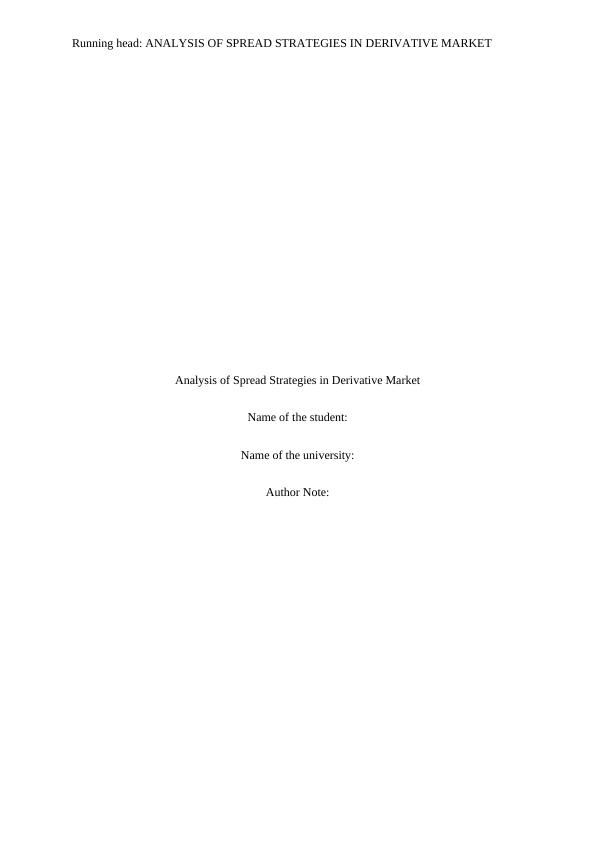Analysis of Spread Strategies in Derivative Market
9 Pages2330 Words266 Views
Added on 2023-04-21
About This Document
This article provides an analysis of spread strategies in the derivative market. It explains the concepts of vertical, horizontal, and diagonal spreads, and discusses their risks and benefits. The article also emphasizes the importance of understanding the underlying asset and the option market before implementing spread strategies.
Analysis of Spread Strategies in Derivative Market
Added on 2023-04-21
ShareRelated Documents
End of preview
Want to access all the pages? Upload your documents or become a member.
Financial Risk Management: Collar and Straddle Option Strategies
|6
|1298
|475
Options Strategies: Iron Condor, Long Straddle, Iron Butterfly, Short Straddle, Covered Call and Covered Put
|8
|2678
|47
(Solution) Corporate Finance: Assignment
|14
|3138
|53
Option Strategies for Hedging Assignment
|3
|603
|84
Options Trading Strategies and Binomial Model in Finance
|9
|1483
|54
Derivatives
|6
|851
|493



